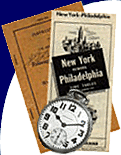

| home | articles | briefs | classifieds | flimsies | interchange |
 |
 |
||||||
|
|||||||
 |
RyPN Briefs October 21, 2006 previous brief ~ return to briefs index ~ next brief Abatron Wood Restoration Products Used in a Streetcar Repair Making some small structural and cosmetic repairs to Belgian tramcar 1069 at National Capitol Trolley Museum was a pickup job to keep me busy, while waiting for paint to dry on a complete exterior repainting of TARS 678. 1069 was generally in good condition, with some work partially completed by volunteers. It was desired that 678 and 1069 both be useable during the October Open House at the museum – thus a strategy of patching and touching up rather than a complete cosmetic refinishing was chosen for 1069.
The priority structural concern on 1069 was at the front end, where a post intersects two parts of the belt rail at an angle. The Belgians had made a Bondo repair to this area as part of the work done to the car before sending it to the Great Cypress Resort in Orlando, where it was used for several years before coming to NCTM. Bondo is not a structural product, just a filler, and is hydroscopic, so it and the surrounding wood had both failed.
I did not document the as-found condition once the Bondo and loose rot were removed, as the thread which occasioned this brief had not yet appeared. Once the material was removed from the front, it was obvious the rot extended up and down and back along the grain of the belt rail material, as well as the post. Removing the wood window stop from the interior opened the cavity from the top on both sides of the post. Once the loose rot was dug out, a mixture of Abatron Liquid Wood was applied. The mixture was 40/40 parts A&B, with a 20% thinning with Abosolve. The thinner mixture penetrated quickly when brushed into the surface of the rot. Several applications were made without waiting for previous applications to harden, to encourage maximum penetration. A small amount was poured into the top to penetrate deep into the bottom of the cavity, which was not easily reached by brush. During a subsequent visit, once the LiquidWood had hardened, the cavity was packed with WoodEpox filler. I like to mix the WoodEpox by kneading equal parts of both filler and catalyst together by hand, wearing latex gloves. I pushed the WoodEpox deeply into the cavities from the bottom up and the front in, not waiting at all between subsequent fillings, until it extruded slightly out of the top while remaining slightly concave from the front. As it hardened, it expanded, resulting in the convexity shown in the photo below. In another subsequent visit, I carved the hardened WoodEpox down to roughly desired surface with a sharp wood chisel, then sanded it smooth as shown below. I simply chiseled the surface flat where the interior trim would be installed. The metal belt rail was installed with wood screws over the repair, then the patch touched up and manually striped to complete the repair as shown below. The original striping was done with body tape. Hopefully, the painted striping can be painted over and taped properly for an exact match in the future. Abatron is a structural product, and can be expected to hold together as well as the wood itself. Structural epoxies and fillers are very useful in dealing with areas needing repair which are inconvenient to repair by replacement, in otherwise basically sound structures. I would encourage every restoration craftsman to learn to use these products and include them in their work strategies where appropriate. |
|||||||
Copyright © 1998 thru 2024, all rights reserved, contents may not be used without permission. |